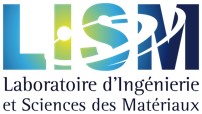Three-dimensional structure of the single domain cupredoxin AcoP
Résumé
Cupredoxins are widely occurring copper-binding proteins with a typical Greek-key beta barrel fold. They are generally described as electron carriers that rely on a T1 copper center coordinated by four ligands provided by the folded polypeptide. The discovery of novel cupredoxins demonstrates the high diversity of this family, with variations in term of copper-binding ligands, copper center geometry, redox potential, as well as biological function. AcoP is a periplasmic protein belonging to the iron respiratory chain of the acidophilic bacterium Acidithiobacillus ferrooxidans . AcoP presents original features: highly resistant to acidic pH, it possesses a constrained green-type copper center of high redox potential. To understand the unique properties of AcoP, we undertook structural and biophysical characterization of wild-type AcoP and of two Cu-ligand mutants (H166A and M171A). The crystallographic structure of AcoP at 1.65 Å resolution unveils a typical cupredoxin fold with extended loops, never observed in previously characterized cupredoxins, that might be involved in the interaction of AcoP with its physiological partners. Moreover, the structure shows that the green color of AcoP cannot be attributed to nonclassical copper ligands, its green-colored copper center raising from a long Cu-S (Cys) bond, determined by both X-ray diffraction and EXAFS. The crystal structures of two AcoP mutants confirm that the active center of AcoP is highly constrained. Comparative analysis with other cupredoxins of known structures, suggests that in AcoP the second coordination sphere might be an important determinant of active center rigidity due to the presence of an extensive hydrogen bond network.
| Origine | Fichiers produits par l'(les) auteur(s) |
|---|

